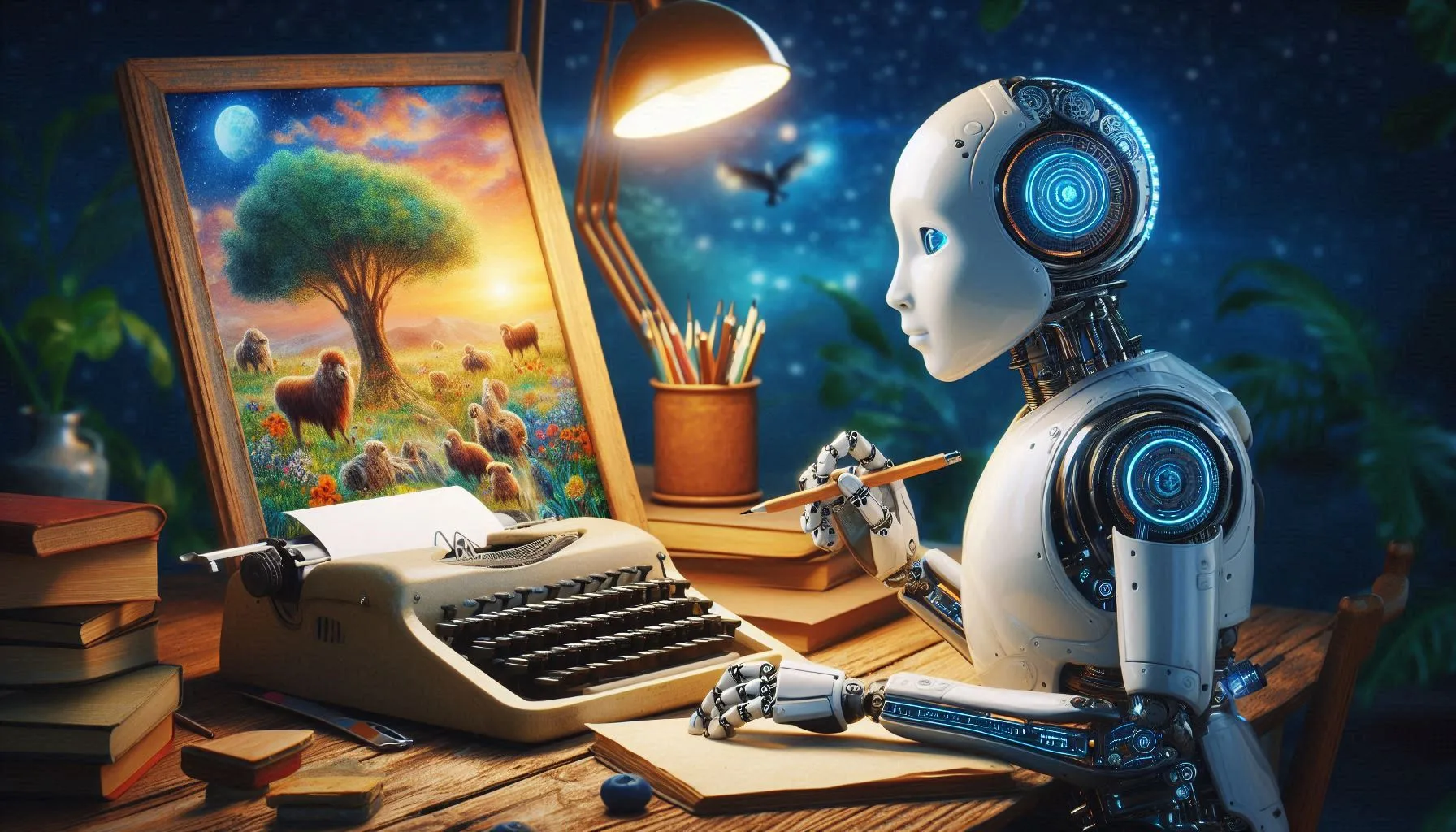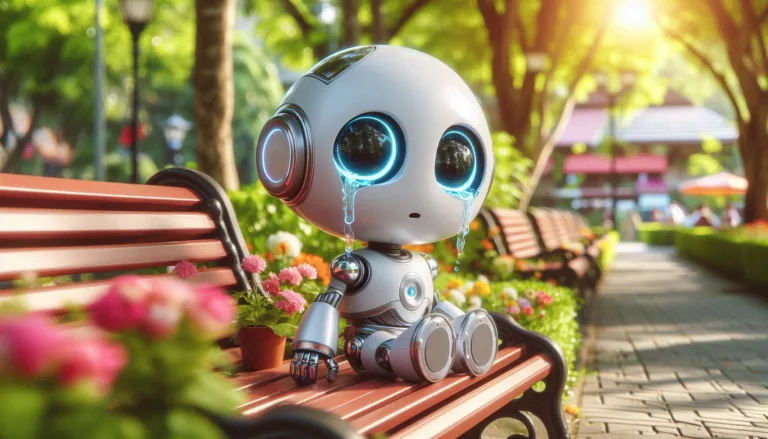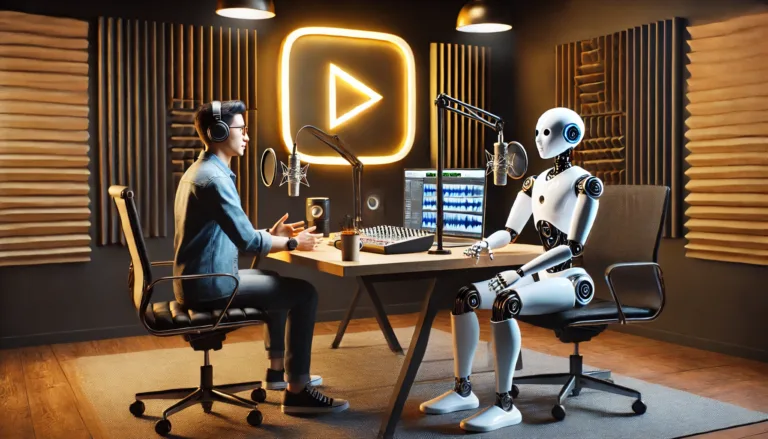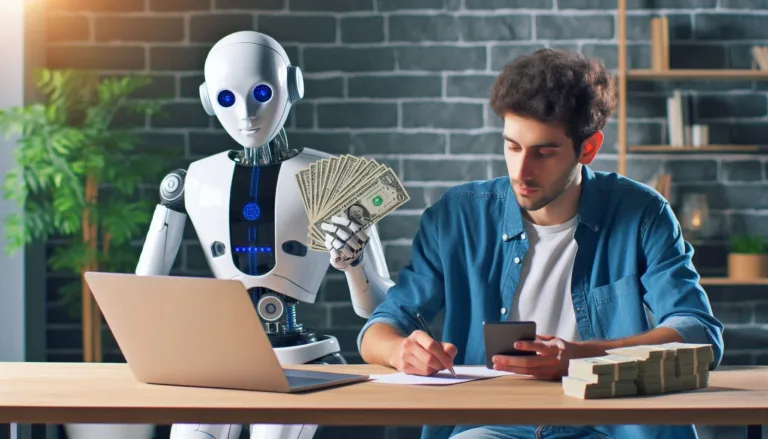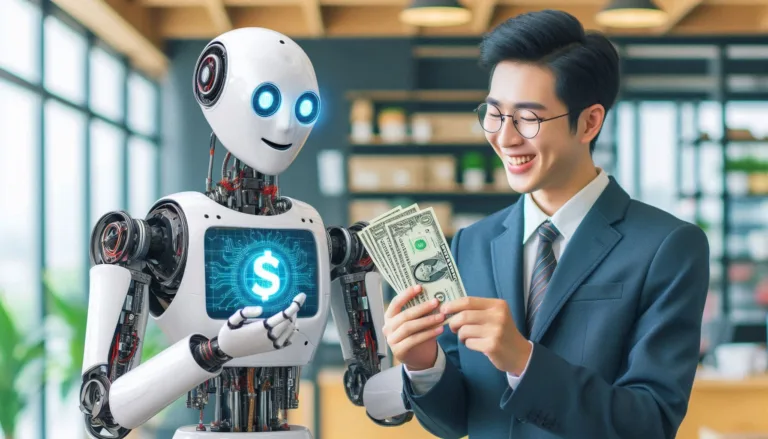Artificial intelligence (AI) is expanding beyond traditional tasks, now exploring fields once thought exclusive to human intelligence, like creativity. Previously, creativity was considered uniquely human, a blend of emotions, experience, and imagination. Today, however, AI shows the potential for creativity, challenging traditional views on artistic expression and creative problem-solving.
Understanding AI Creativity: Can Machines Be Imaginative?
The idea of “creative AI” refers to AI systems that simulate aspects of creative thinking, producing outputs resembling the work of human artists, writers, and musicians. By analyzing large datasets, these AI systems learn from existing creative works to generate new content. While this form of creativity is different from human spontaneity, it still provides fresh perspectives across creative industries.
Examples of Creative AI Fields
To better understand how AI fits into creative roles, let’s explore general categories where AI shows creative potential, while considering whether machines could rival human creativity.
1. AIs That Generate Images
Some AI systems create visual art based on text descriptions or input criteria, demonstrating AI’s ability to interpret descriptive phrases and transform them into images. With these capabilities, image-generating AIs can combine visual elements in imaginative ways, even applying different artistic styles to generate unique visuals. While these AI systems may not grasp emotions or personal experiences, their output challenges conventional ideas about creativity.
2. AIs That Generate Video
AI in video generation is another field where creativity emerges. These AIs create short video clips from text prompts, adding a layer of complexity with movement and time-based continuity. This requires advanced AI models capable of interpreting spatial relationships and timing. AI-generated video can also play an essential role in digital media, producing engaging content efficiently and opening new possibilities for creative fields like marketing and entertainment.
3. AIs That Generate Text and Stories
Another impressive AI ability is generating written content. Some advanced text-generating AIs produce anything from brief content pieces to longer narratives. By learning from large datasets of books, articles, and stories, these models can simulate a variety of genres, tones, and writing styles. However, even though these text-based AIs generate coherent stories, they often lack the emotional subtleties of human authors, reminding us that while AI is capable, it doesn’t yet match the depth human experience brings to writing.
Can AI Creativity Rival Human Creativity?
While AI demonstrates impressive creative abilities, a key question remains: can it be as good as human creativity? The answer lies in the nature of AI creativity, which differs from human creativity in critical ways.
Human creativity emerges from emotions, experiences, and subjective interpretations. AI, by contrast, generates content based on data patterns. This process could be viewed as imitative rather than truly original. For example, although an image-generating AI can create visually interesting images, it lacks an understanding of human concepts such as beauty, joy, or melancholy.
That said, AI’s data-driven creativity offers unique advantages. It can quickly analyze massive datasets, recognize trends, and generate content at unparalleled speeds. In industries like digital marketing, AI can streamline idea generation, helping creators brainstorm more effectively. By producing iterative variations of a theme, AI can also inspire human creators, suggesting novel ideas that might not have been considered.
The Science Behind Creative AI: How Do Engineers Build AI That Can Create?
Building creative AI involves sophisticated engineering, as well as an understanding of how creative thinking can be simulated through machine learning. Here’s an overview of the steps programmers and engineers take to develop creative AI systems.
1. Data Collection and Preprocessing
The foundation of any creative AI model is its dataset. Engineers collect extensive datasets relevant to the AI’s intended creative domain, such as images, text, or videos. For instance, in building an AI for image generation, engineers use a dataset of paired images and descriptive texts. This enables the AI to learn relationships between descriptive phrases and visual representations.
Preprocessing, or preparing the data, ensures the AI learns relevant patterns and reduces the risk of biased outputs. For text generation models, engineers remove unwanted language patterns and standardize formats, which improves the AI’s coherence in writing. This step ensures that only relevant and high-quality data is included.
2. Model Architecture: Neural Networks and Deep Learning
Most creative AI systems rely on neural networks, specifically deep learning models. Neural networks mimic the structure of the human brain, using layers of interconnected nodes to process data. These models learn to recognize patterns by adjusting the “weights” of connections between nodes, which allows them to make complex decisions.
Visual tasks often employ convolutional neural networks (CNNs) because they excel at analyzing spatial relationships. In text-based tasks, the Transformer architecture is frequently used because it excels in language processing by managing long-range dependencies. Each neural network architecture offers unique benefits depending on the AI’s creative application, whether it’s interpreting images, text, or other forms of data.
3. Training and Fine-Tuning the Model
Once the architecture is set, engineers begin training the model. During training, the AI is exposed to its dataset and tasked with producing outputs that are then compared to desired results. The model adjusts its internal parameters through a process called backpropagation, which gradually improves its accuracy.
Training creative AI models demands significant computational power and time. Language-based models, for example, often train for weeks across thousands of processing units. Engineers also employ reinforcement learning, a technique that helps models explore various output possibilities—an essential quality in creative applications, where “correct” answers are subjective.
Fine-tuning follows training, where engineers make final adjustments to optimize the model for specific tasks. For instance, a text generator may be fine-tuned to produce only formal language or to avoid particular content themes. Fine-tuning helps ensure that the AI meets specific industry or ethical guidelines.
4. Incorporating Ethical and Creative Constraints
In creative applications, maintaining ethical and cultural sensitivity is essential. Engineers implement constraints to prevent AI from generating harmful or inappropriate content. For example, image-generating AIs may filter certain prompts to avoid controversial themes.
These constraints align AI-generated content with societal and ethical values. In text generation, content filters and prompt engineering prevent the AI from producing offensive language or biased narratives. As creative AI continues to evolve, these ethical safeguards are critical in ensuring the technology remains responsible and beneficial.
5. Reinforcement Learning and Generative Adversarial Networks (GANs)
Creative AI frequently explores subjective or ambiguous areas, making reinforcement learning a valuable tool. Reinforcement learning uses trial and error, allowing AI to receive feedback on the quality of its outputs. Engineers set up a reward system to help the AI explore various possibilities, particularly useful in creative fields where there are no definitive answers.
Generative Adversarial Networks (GANs) are another popular tool in creative AI. In a GAN, two neural networks—a generator and a discriminator—work in tandem to create realistic content. The generator produces outputs (like images), while the discriminator evaluates their authenticity. Through continuous interaction, both networks refine their outputs, resulting in realistic and often innovative results. GANs play a crucial role in art, video, and even music generation, pushing AI to produce content that mimics human creativity.
The Future of Creative AI: Will Machines Ever Be Truly Creative?
The rapid advancement of AI creativity continues to stir debate about AI’s potential to replace or complement human creativity. While AI systems now generate art, stories, and videos, they lack human emotional depth and personal experience. Researchers, however, are developing ways to introduce contextual awareness and emotional intelligence into AI, hoping to bridge this gap.
Although AI could produce content indistinguishable from human work, it may continue to serve as a tool that complements human creativity rather than replacing it. Creative AI can assist artists, writers, and filmmakers by automating repetitive tasks, generating ideas, and offering alternative approaches to traditional processes. In this way, AI redefines creativity, not by competing with human creators, but by expanding creative possibilities through new forms of collaboration.
Conclusion
As we explore AI’s creative potential, we gain insight into its place in our future. Although machines may never fully replicate the human mind, creative AI is reshaping industries and challenging our ideas on artistry. AI’s role in creativity will likely inspire new partnerships between humans and machines, redefining what it means to be creative.
